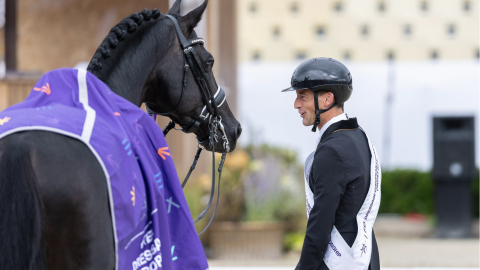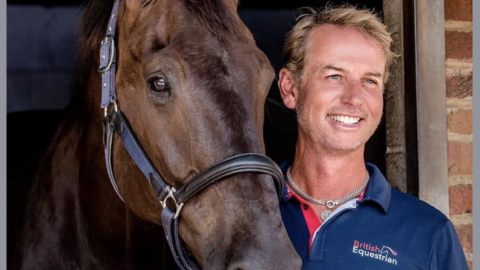This September, during the Longines FEI/WBFSH World Breeding Dressage Championships in Ermelo, I witnessed something that made me stop and think. Olympic riders — some of the very same who had just stood on the podium at the Paris Games — were there quietly working their young horses. Not giving clinics, not posing for cameras, but training. Riding their four-year-olds through baby tests with the same patience and precision they bring to the Grand Prix arena.
It was a powerful image. Because it represents something that, in many countries, is becoming increasingly rare: great riders who remain great trainers. In Europe, the path to mastery doesn’t end when a rider reaches the top — it deepens. The same professionals who ride under stadium lights also rise early to ride the green, unbalanced, curious minds that will one day replace their current stars.
But elsewhere — especially in the United States — a growing question hangs in the air:
If every young professional wants to skip the foundation work and only ride made horses, who will train the trainers?
The Fast Track and the Forgotten Skills
There is no doubt that modern dressage has become more glamorous, more competitive, and more expensive than ever before. Social media shows us the medals, the sponsors, and the polished horses dancing effortlessly in the arena. For many young riders, the dream seems to begin with a wealthy backer and a powerful horse, not with a foal in a field or long days on the lunge.
But the truth is this: the soul of dressage does not lie in competition results. It lies in the quiet, unseen hours of training. In the mistakes, the repetitions, and the patient evolution of a horse’s confidence.
The future of the sport depends on a generation of professionals who not only ride beautifully, but who also understandhow to build a horse — mentally, physically, and emotionally. If that knowledge fades, if fewer people know how to start a horse correctly, we risk losing the essence of classical training itself.
The Apprenticeship That Builds Character
Producing young horses is not glamorous work. It’s slow, uncertain, and requires the ability to adapt every single day. But it also forges the deepest kind of horsemanship — the kind that cannot be learned from textbooks or championships.
Those who choose to walk this path develop patience, empathy, and true feel. They learn to communicate with horses that have no experience, to build trust where fear could appear, and to celebrate progress that cannot be measured by a score.
It’s also the path to independence. Riders who know how to start and produce young horses are never at the mercy of losing a ride or a client. They can create their own opportunities. As one rider put it beautifully:
“I couldn’t afford big horses, so I had to make them. And that made me unbreakable.”
Teaching the Harder Path
As professionals, we carry a responsibility that goes beyond producing results — we must teach the next generation that the slower route has meaning. That real growth happens not when everything is easy, but when you’re learning alongside a horse who is also figuring it out.
Mentorship matters. The next generation needs examples of riders and coaches who are not afraid to start from the beginning — who show that the magic of dressage comes from education, not shortcuts.
Because the truth is, made horses do not make trainers. But young horses do.
The Real Question
Every great master in the history of dressage — from Steinbrecht to Hester — built their skill not by riding finished horses, but by making them. And that’s what we must preserve.
In a world where ambition runs faster than wisdom, the future of dressage will depend on those who still value patience, feel, and learning through process.
So as we admire the polished performances on the world stage, let’s also honor those quiet mornings in the arena, where the next generation of equine athletes — and human trainers — are being shaped.
Because at the end of the day, the medals will fade, but the question will remain:
Who will train the trainers?





